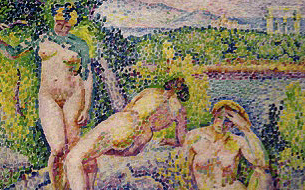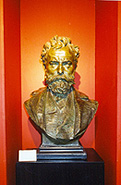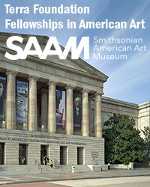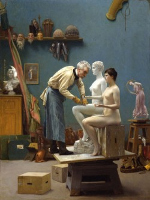X
Please wait for the PDF.
The browser will either open the file, download it, or display a dialog.
The browser will either open the file, download it, or display a dialog.
The neo-impressionist Henri-Edmond Cross (1856–1910) was one of several vanguard artists of the late nineteenth century who traveled south, to France’s Mediterranean coast, for his health, settling on the Côte d’Azur from 1891 onwards. Cross’s chronic arthritis has been constructed by his biographers, his friends, and even himself as a catalyst to his image-making. The aim of this article is to contextualize how the subject of his ill health dominates art-historical analyses of his oeuvre, and why it has unwittingly become the foundation of his biography. Through primary texts and images, this article analyzes Cross’s life on the Côte d’Azur as a case study, not a lionizing biography, bound to contemporaneous medico-geographical perceptions of the ‘imprinting’ power of southern climates on northern bodies, especially invalids. Paintings of the last five years of his life, exemplified by Nymphes (1906), stand as metaphor, product, and producer of such perceptions.
This essay offers a new reading of Caspar David Friedrich’s Abbey in the Oak Forest, situating the work within the context of the artist’s other paintings of cemeteries and churchyards. It argues that in these paintings, Friedrich was commenting on changes in the ways that bodies were buried at the start of the nineteenth century, picturing burial in ruined medieval churches rather than in the new urban cemeteries in Dresden, which Friedrich himself was involved in planning. Rather than comforting viewers by conforming to contemporary notions of how death was performed, Friedrich places the viewer into the past to confront death through spaces that were then being erased from the landscape.
By the second half of the 19th century, advertising posters that plastered the streets of London were denounced as one of the evils of modern life. In response, commentators considered how artists might improve advertising. This article examines two 19th-century advertisements that drew on the fine arts in different ways: Hubert Herkomer’s 1881 advertising poster for the Magazine of Art, and an 1889 advertisement for Sunlight Soap that was based on a painting by William Powell Frith. The discussions they generated show that the problem with advertising was not simply its banal design or its garish color, as some commentators suggested, but the mode of viewing it promoted.
In 1902, the Dutch artist and designer, Johan Thorn Prikker (1868–1932), produced a monumental mural painting with a complex decorative program featuring a Christ-figure centrally positioned within an intricate geometric framework for the entrance hallway of De Zeemeeuw (The Seagull), a house located in The Hague designed by the Belgian architect Henry van de Velde (1863–1957). This article examines the significance of the mural for its patron, W. J. H. Leuring (1864–1936) and considers it in light of Thorn Prikker's theories of ornamentation and of the role of the artist—the former being tied to Theosophy, Freemasonry, and Eastern mysticism and the latter reflecting the ideals of social anarchism at the turn of the century and the related Dutch and Belgian concept of Gemeenschapskunst, or Community Art.











